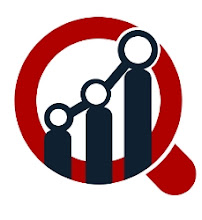Europe Glyphosate Market: Charting a Course Amid
Regulatory Uncertainty
In Europe, glyphosate, like in North America, is a widely used
herbicide integral to modern agriculture. However, the European glyphosate
market faces unique challenges and regulatory dynamics that shape its usage and
market landscape. As concerns about glyphosate's safety and environmental
impact persist, European regulators and stakeholders grapple with navigating a
path forward that balances agricultural productivity with environmental and
public health considerations.
The European glyphosate
market is characterized by its importance in weed management across a
wide range of crops, including cereals, oilseeds, vegetables, and vineyards.
Glyphosate-based herbicides are valued for their efficacy, versatility, and
relatively low toxicity to mammals, making them an attractive choice for
farmers seeking effective weed control solutions. Moreover, glyphosate's role
in non-agricultural settings, such as urban weed control, railway maintenance,
and forestry, further contributes to its market significance in Europe.
One of the key drivers of the glyphosate market in Europe is the
regulatory framework governing pesticide use and registration. The European
Union's (EU) stringent regulatory standards and precautionary approach to
pesticide risk assessment have led to increased scrutiny of glyphosate's safety
and environmental impact. Despite being reapproved for use in the EU in 2017,
glyphosate's authorization remains a subject of controversy and debate, with
ongoing discussions about its potential risks and the need for alternative weed
management strategies.
Furthermore, glyphosate's classification as a probable carcinogen
by the International Agency for Research on Cancer (IARC) and concerns about
its impact on biodiversity and ecosystem health have fueled calls for stricter
regulation and restrictions on its use. Several European countries have imposed
partial or total bans on glyphosate use in certain settings, such as public
spaces, parks, and non-agricultural areas, reflecting divergent attitudes
towards glyphosate within the EU.
Moreover, glyphosate's role in glyphosate-tolerant genetically
modified (GM) crops, such as Roundup Ready soybeans and maize, has been a
subject of controversy and regulatory scrutiny in Europe. While GM crops have
limited commercial cultivation in the EU, their import and use in animal feed
and food products raise questions about glyphosate residues, consumer safety,
and traceability requirements, further complicating the regulatory landscape
for glyphosate in Europe.
Key
Players
A
handful of established companies dominate the glyphosate market, controlling
production and distribution. Some prominent names include:
- Monsanto Company
(Bayer) (US/Germany)
- BASF SE (Germany)
- Dow Chemical Company
(DowDuPont) (US)
- Syngenta Group
(Switzerland)
- ChemChina (China)
- Nufarm Limited
(Australia)
- ADAMA Agricultural
Solutions Ltd. (Israel)
These
companies invest in research and development, production facilities, and
distribution networks to maintain their market share.
Glyphosate
Market Segment Insights:
The
glyphosate market can be segmented based on application, form, and crop type.
Here's a closer look:
- Application: Glyphosate finds
application in various agricultural settings:
- Pre-emergent weed
control: Applied
before weeds germinate, preventing them from establishing.
- Post-emergent weed
control: Targets
existing weeds, allowing for targeted control around desirable plants.
- Desiccation: Used to dry out
crops before harvest, facilitating easier harvesting and reducing moisture
content.
- Form: Glyphosate is
available in various forms to suit specific application needs:
- Liquid: This is the most
common form, ideal for spraying and mixing with other herbicides.
- Dry: This form comes
as granules or powder, suitable for broadcasting or targeted application.
- Water-soluble packets: These
pre-measured packets offer convenient application for smaller areas.
- Crop Type: Glyphosate is
widely used across various crops:
- Genetically modified
(GM) crops: Many
GM crops are engineered to be glyphosate-resistant, allowing for easier
weed control without harming the crop itself.
- Conventional crops: Glyphosate is
used in conventional farming practices, but careful application is
necessary to avoid harming the desired plants.
About
US
At
Market Research Future (MRFR), we enable our customers to unravel the
complexity of various industries through our Cooked Research Report (CRR),
Half-Cooked Research Reports (HCRR), Raw Research Reports (3R), Continuous-Feed
Research (CFR), and Market Research Consulting Services. MRFR team have supreme
objective to provide the optimum quality market research and intelligence
services to our clients. Our market research studies by products, services,
technologies, applications, end users, and market players for global, regional,
and country level market segments, enable our clients to see more, know more,
and do more, which help to answer all their most important questions. To stay
updated with technology and work process of the industry, MRFR often plans
conducts meet with the industry experts and industrial visits for its research
analyst members.
Contact
us:
Market
Research Future (part of Wantstats Research and Media Private Limited),
99
Hudson Street,5Th Floor New York 10013, United States of America
Sales: +1
628 258 0071 (US) +44 2035 002 764 (UK)
Email: Sales@marketresearchfuture.com





.jpg)
No comments:
Post a Comment